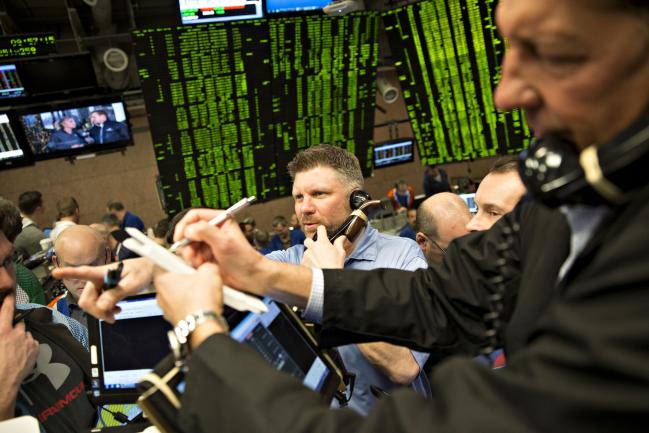(Bloomberg) -- The biggest pension fund in Denmark says it’s misguided to blame last week’s sudden selloff on complex financial instruments that are tied to volatility.
Christian Hyldahl, the chief executive officer of ATP, a $127 billion fund based north of Copenhagen, says what we witnessed in the first week of February was just a taste of things to come as monetary stimulus is unwound and inflation returns.
How Two Tiny Volatility Products Helped Fuel Sudden Stock Slump
Map to the Underworld: $2 Trillion of Volatility Trades Here
“So we will see this volatility,” Hyldahl said in an interview in the Danish capital. “But I think the core of this wasn’t toxic instruments that did something bad. The core of this is the uncertainty of how fast the Fed will raise rates.”
An Inventor of the VIX: ‘I Don’t Know Why These Products Exist’
Derivatives that are essentially bets on price volatility had become so complex that few really understood their implications, and that fed a market panic, the argument goes. Funds that target volatility using such instruments were quickly identified as potential culprits behind the turmoil.
Volatility Inc.: Inside Wall Street’s $8 Billion Time Bomb
But Hyldahl suggests that’s a narrow analysis.
“I think no matter what, even if you just have simple linear instruments, the complexity in unwinding the experiment of central banks in a way that you manage expectations in the market...that is a complex task that will generate a lot of volatility,” he said.
Danes are required by law to contribute a portion of their incomes to ATP. The fund holds most of its assets in a hedged portfolio, with a smaller allocation going into a higher-risk basket. ATP returned 29.5 percent, before tax and costs, on its investment portfolio last year. It’s delivered an average of just over 8 percent over the past two decades. Investments in inflation-related instruments were among the best performing in the portfolio last year.
Lessons Learned
The main takeaway from last week’s sudden surge in volatility after an unnaturally long period of calm is that we’re on the way toward more normal times, Hyldahl said.
“I see this as part of the normalization of interest rates, and that will be a very volatile path,” he said.
“That said, things can go wrong and it’s still an experiment and we still need to get out of it.” But last week was “not an event that somehow indicates that it is not going the way it should. This is part of normality in unwinding the experiment.”
The upshot is that investors need to get used to a new reality, he said.
“I don’t think we can generate the same type of returns in 2018,” as in recent years, “despite economies going well,” Hyldahl said. “I think we’ll have a lot more volatility and we will not make money on the interest-rate part of the portfolio. Actually, I hope we will not make money on the interest-rate part of the portfolio, because if we do, it’s because something has gone wrong.”
